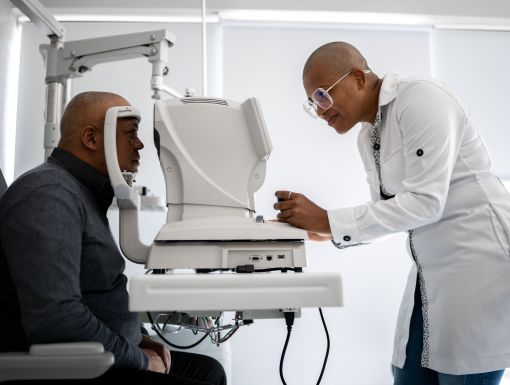
7 Signs: Is Your Body Telling You to Get Checked for Type 2 Diabetes?
Are you finding you have to pee more often than usual? Like no amount of water can quench your thirst? Or maybe you have been unusually tired lately?
If you have been experiencing these symptoms, you may be suffering from Type 2 diabetes.
Diabetes is a chronic, or ongoing, medical condition characterized by high levels of blood sugar (glucose). It is also one of the most common chronic conditions. Across the United States and beyond, diabetes is a significant health concern. Unfortunately, rates are above average in the Gulf Coast states, with approximately 14.2% and 14.4% of adults in Louisiana and Mississippi, respectively, living with diagnosed diabetes. In addition, it is estimated that tens of thousands of residents of these states have diabetes but don’t know it, which greatly increases their health risk.
However, programs like Ochsner Digital Medicine, which helps members manage the cardiometabolic conditions of Type 2 diabetes, high blood pressure, high cholesterol and weight, can help. By providing expert care and support, we can see these percentages reduced.
One of the biggest risk factors for Type 2 diabetes is obesity. Screening for prediabetes and Type 2 diabetes is recommended in adults aged 35 to 70 years who are overweight or obese. “Overweight” is defined as having a body mass index (BMI) greater than 25, and “obese” is defined as a BMI greater than 30. Of course, high weight does not always lead to diabetes. In fact, weight loss is a symptom that occurs in some diabetes patients!
Know the warning signs
Being unaware of your diabetes status can lead to many complications, including heart disease, stroke, kidney failure, nerve damage and blindness. These complications not only diminish the quality of life for those affected but also contribute to increased healthcare costs and increased mortality.
It’s important to pay attention to your body and get screened if something feels off. Common symptoms that may indicate diabetes include, but are not limited to:
- Increased urination but frequent thirst: To flush out high levels of glucose, the body will produce more urine. In turn, your brain is telling you to drink more to replace the fluids your body has flushed out.
- Unexplained weight loss: With diabetes, the lack of insulin prevents your body’s cells from getting glucose to use for energy. So, the body instead burns fat and muscle for energy, which can lead to a reduction in body weight.
- Persistent fatigue: Again, when the body does not produce enough insulin, the cells lack glucose for energy, which causes fatigue.
- Blurred vision: High blood sugar damages blood vessels in the retina. These damaged blood vessels can swell and leak, causing blurry vision.
- Slow-healing wounds or cuts: The damaged blood vessels caused by high sugar can impair the body’s ability to bring nutrients and oxygen to the wound site. This slows healing.
- Tingling or numbness in extremities: Pain lets you know when something is wrong with your body. However, diabetes can cause nerve damage (neuropathy). People may not feel it when they have hurt themselves, which causes the injured area to get worse. Unfortunately, this is the reason why many people with diabetes have their limbs amputated.
- Recurring infections. Diabetes makes your immune system less effective. High blood sugar stresses your body, making every system work harder. This includes your white blood cells, the very cells that attack viruses and bacteria.
Importance of screenings
If you have any of these symptoms, it is important that you get checked—especially if you are 35 to 70 years old and overweight. A simple blood test can tell you if you have Type 2 diabetes. If you test positive, it is important to see your doctor to make a plan to manage the diabetes and A1C.
Though it cannot be permanently reversed, many people can put their Type 2 diabetes into remission by changing their lifestyle. Eating whole grains, lean proteins, fruits and vegetables is important, as is limiting sugary and processed foods. Doing so can help regulate blood sugar levels. Regular exercise can also help to manage blood sugar and weight. If lifestyle changes do not work, medications may be prescribed to control glucose levels.
It is crucial to have a care team who can create a personalized diabetes management plan that aligns with your goals.
Have you already been diagnosed with Type 2 diabetes?
Enrolling in the Ochsner Digital Medicine program will help you take control of your condition and prevent further side effects of your diabetes—all from the comfort of your home. By joining the program, you’ll receive a digital glucometer that connects with your smartphone or tablet. You’ll also enjoy the support of a panel of professional health coaches and a dedicated licensed clinician. Your care team will encourage you to stay up to date with annual screenings, help manage your medications, monitor your blood sugar readings and provide lifestyle support. The easy digital tools allow you to take care of yourself at home, limiting extra trips to the clinic.
The Ochsner Digital Medicine program also manages high blood pressure and weight.
By joining Digital Medicine, you are taking a significant step to be more proactive in your Type 2 diabetes management. Keeping your blood sugar under control is an important aspect of living a healthy lifestyle and enjoying the things you love. Enrollment is highly encouraged.
With Digital Medicine, 4 out of 5 members achieve their sugar level goals within 6 months. Learn more at Digital Medicine | Ochsner Health.


